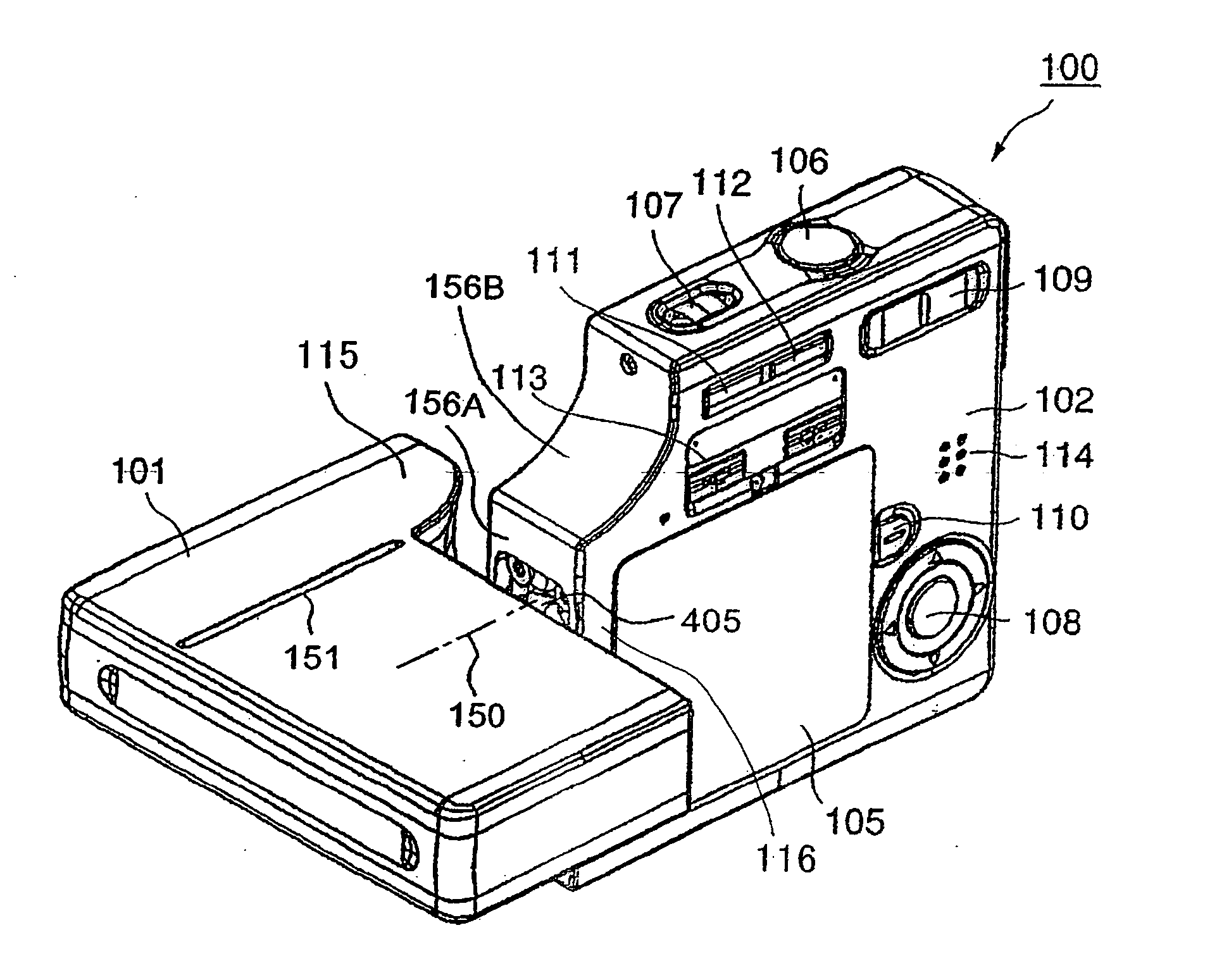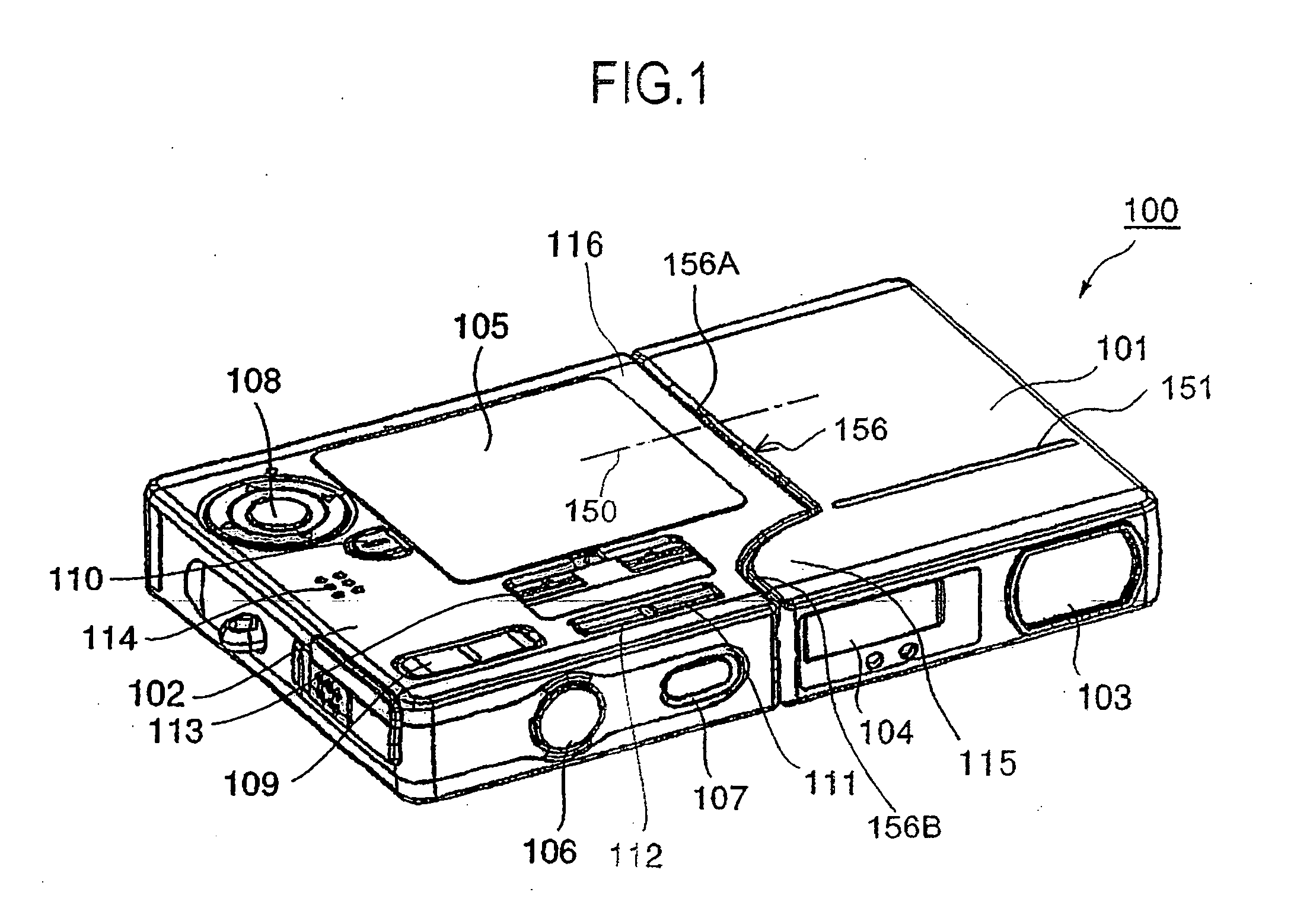Imaging apparatus
a technology of imaging apparatus and lens, which is applied in the field of imaging apparatus, can solve the problems of difficult to compose a camera small, difficult to make the thickness of the camera thinner than a certain thickness, and large sum of the thickness of the lens, so as to improve the usability and improve the zoom magnification.
- Summary
- Abstract
- Description
- Claims
- Application Information
AI Technical Summary
Benefits of technology
Problems solved by technology
Method used
Image
Examples
Embodiment Construction
[0077] A preferred embodiment of the present invention will now be detailed with reference to the accompanying drawings. It is intended, however, that unless particularly specified, dimensions, materials, relative positions and so forth of the constituent parts in the embodiments shall be interpreted as illustrative only not as limitative of the scope of the present invention.
[0078] In the drawings, the each of the same constituent parts is marked with identical numeral. FIG. 1 is an external view of an embodiment of the electronic camera according to the present invention, FIG. 2 is a view when the lens of the electronic camera according to the present invention is directed toward a subject to be shot, FIG. 3 is a view when the lens of the electronic camera according to the present invention is directed toward the operator of the camera, and FIG. 4 is a representation showing the state of holding the camera when shooting is practiced with the lens of the electronic camera accordin...
PUM
 Login to View More
Login to View More Abstract
Description
Claims
Application Information
 Login to View More
Login to View More - R&D
- Intellectual Property
- Life Sciences
- Materials
- Tech Scout
- Unparalleled Data Quality
- Higher Quality Content
- 60% Fewer Hallucinations
Browse by: Latest US Patents, China's latest patents, Technical Efficacy Thesaurus, Application Domain, Technology Topic, Popular Technical Reports.
© 2025 PatSnap. All rights reserved.Legal|Privacy policy|Modern Slavery Act Transparency Statement|Sitemap|About US| Contact US: help@patsnap.com



